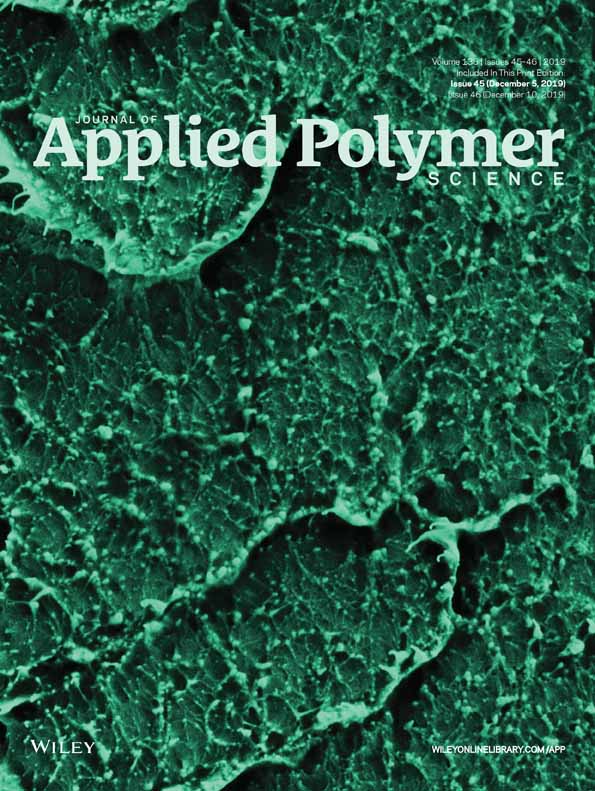Temperature-triggered three-dimensional network formation in graphene–polybutadiene nanocomposite
ABSTRACT
Since the invention of vulcanization in the early 19th century, the study on potential factors affecting the crosslink network formation and the corresponding changes in the initial physiochemical attributes of elastomer has been the subject of prime interest. Where several investigations highlight the mechanism and kinetics of the crosslink network formation, the exclusive effect of compounding ingredients, such as filler, plasticizer, and anti-oxidant, is still being pursued. In this direction, we report preparation and characterization of cis-1,4-polybutadiene (PB)–graphene (G) nanocomposite and highlight a phenomenon in which graphene induces the spontaneous chemical reactions in the cis-1,4-polybutadiene elastomer matrix triggered at 170 °C temperature. PB–G nanocomposites were prepared by a fairly simple solution mixing and precipitation process, and such nanocomposites were analytically investigated using several characterization techniques. The differential scanning calorimetry analysis shows the evidence of reactions via exothermic peak transition at ~170 °C temperature. Dynamic mechanical thermal analysis and stress–strain analysis suggest improvement in the initial physiochemical attributes of elastomer. The equilibrium swelling study quantifies the network structure that formed during the spontaneous reactions induced by graphene. Nuclear magnetic resonance (1H-NMR) and Raman spectroscopic analysis suggest clear deviation in the pristine chemical structure of cis-1,4-PB elastomer and graphene, respectively. We believe that the spontaneous chemical reactions led to the formation of a three-dimensional network within the PB elastomer. © 2019 Wiley Periodicals, Inc. J. Appl. Polym. Sci. 2019, 136, 48209.




